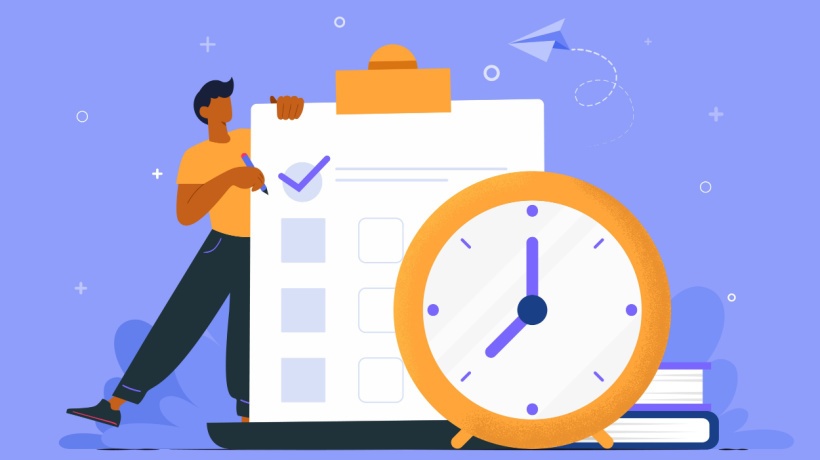Steps To Ensure No Time Is Wasted During eLearning Design And Development Phases
Here are my 5 tips for being a developer who delivers their eLearning projects on time:
1. Designers And Developers Need To Work Together
I'm fortunate to be both a designer and a developer, but sometimes, I'm hired to just design or develop. I'm often surprised that designers and developers do not consult with one another until the design is complete and signed-off.
If you are a designer, consult with your developer on what is achievable. Write an eLearning design and development proposal that the two of you can deliver on. If you propose a solution that your developer can't deliver on, you will add unnecessary delays to the project. It's great to have these grandiose ideas about what you want a learning interaction to do, but it may be an arduous task for the developer. Don't shy away from projects that might challenge the developer's abilities, but be realistic as well. When I write an eLearning design proposal, I already know in my mind how I will build the proposed course. I might need to delay the presentation of the plan to go and do some research and ensure there is a solution.
If you're the developer, try to schedule a meeting with the designer early in the process to discuss what is achievable in the authoring tool used. You might want to make this meeting a hands-on session. That way, you can show how your authoring tool works—this way, the designer can design the course with those features in mind. As a developer, you don't want to reinvent eLearning. Don't get me wrong, I dedicate plenty of time to developing new solutions to include in my eLearning toolbelt. I only work on new ideas or solutions when I have no other deadlines. Once I've worked out the procedure, I can now save those solutions for the next time I have a project that could use those types of interactions.
2. Gaining Sign-Off At Each Stage Of eLearning Design And Development
I have witnessed first-hand designers/developers who attempt to save time by going straight to development. These designers/developers spend time building interactions before ensuring they are on the right track. Ultimately, time is wasted because the stakeholder could reject much of this development work.
As a designer, I always start with a design plan. In the design plan, I begin with a high-level overview of what the purpose and objective of the course will be. Lessons are usually just bullet points at this stage. I send this to my stakeholder for sign-off.
Once I have sign-off, I begin to design the course on paper (so to speak). I've used a variety of styles of storyboarding tools. I don't think it matters what template you use, just so long as you can easily convey your ideas to the stakeholder. Once I have a storyboard to present, I share it with my client to receive their feedback and ultimately their sign-off.
Once I have their approval, only then do I begin developing the course. Imagine the frustration of being one of those designers/developers I've witnessed, who has spent many weeks building the project only to have their design rejected. Seeking sign-off at each stage is the best way to avoid those types of potential delays.
3. Establish A Scope Of Work
The scope of work can be part of the eLearning design plan, or it can be a separate document. It establishes what the eLearning project will include and what it will not include. The goal of training often determines the scope of an eLearning project. For example, if the goal were to decrease workplace accidents, including instruction on bidding for preferred shifts would be outside of that scope.
Watch for stakeholders who start brainstorming late in the design cycle about unrelated items to include in the course. Stakeholders sometimes realize that they have a separate training issue in another area. Including it in the current project might be their way to save some money on training. Always take those stakeholders back to the scope of work, especially if you have already negotiated fees for the work performed. If they wish to renegotiate those fees or hire you for another eLearning project, that's another matter. Stakeholders will often relinquish their unrelated ideas when they realize that these items will increase the cost or time to complete the project.
4. Work Smarter Not Harder
A couple of years ago, I sat through a conference breakout session on how to create custom questions in Adobe Captivate. This session was an hour-long lecture that taught us the JavaScript code to make a few unique interactions like multiple True/False questions on a single slide possible. It dawned on me about halfway through that by merely rephrasing the question stem, you can achieve the same learning outcome without writing any code. Getting your authoring tool to do something it wasn't designed to do is very satisfying for you, the developer. In reality, though, this has almost no impact on the learner. Always ask yourself before resorting to writing advanced actions or JavaScript, is there a way to achieve the same learning outcome with an easy and quick solution.
5. Don't Sweat The Pixels
Early in my career, I had a moment of eLearning design and development clarity when a supervisor looked over my shoulder and asked what I was doing. I was attempting to make sure that my screen captures on all my slides were perfectly lined up and resized to align with one another perfectly. The supervisor asked when this project was going live. I said it needed to be completed later that day. He reminded me that the only person who will care about this level of detail is me. He told me that my stuff already looked better than the work the rest of the team was producing. "Make it look good, but don't sweat the pixels," he said (I'll never forget that line).
Conclusion
Don't lose sight that the purpose of eLearning is to train employees on how to do their jobs. Spending additional hours trying to split the atom with your eLearning authoring tool will seldom change the outcome of your learning design. I always try to make my eLearning look fantastic. However, the most critical measure of eLearning design and development success is whether employees apply the knowledge and skills from the eLearning back on the job.








